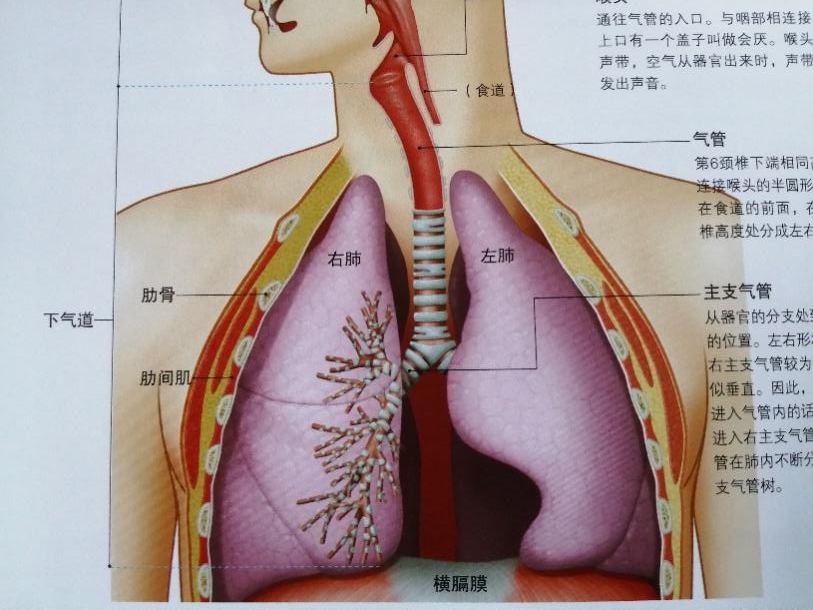
当前课程知识点:Fundamentals of Inorganic Materials Science > 5 Phase equilibrium > 5.6 Ternary diagrams > 5.6.3 (2) Basic types of ternary phase diagrams
返回《Fundamentals of Inorganic Materials Science》慕课在线视频课程列表
返回《Fundamentals of Inorganic Materials Science》慕课在线视频列表
上面我们学习了四个规则
那么不同组成的结晶路程如何分析呢
一般情况下
我们首先要根据无变量点划分副三角形
确定组成点的位置
根据三角形规则先判断出析晶产物和析晶终点
然后分析析晶路线
正确书写其结晶路线
最后利用学过的规则检验其正确性
我们返回到正在学习的
生成一个不一致熔融二元化合物的三元系统相图
来分析析晶路线
这个相图中点线的含义大家现在应该十分清楚了
E点是低共熔点
P点是单转熔点
PQ线是转熔线
那么我们来分析熔体1的析晶路线
熔体1降温
因为点1在S的初经区
所以首先析出晶体S
那么根据背向规则
连接S1
并延长到D点
D点在AS的共熔线上
所以同时吸出晶体A和S
液相点从D点走到E点
固相点从S点向A点移动
液相点到E点时
固相点到达F点
三点一线
液相点在低共熔点E处同时析出ACS
固相点就须离开F向三角形内部移动
当固相点和系统组成点1重合时
液相在E点消失
析晶结束
所以E点是析晶终点
析晶产物为ASC
我们来分析熔体2的析晶路线
熔体2的组成点在△BSC内
BSC对应的无变量点是P点
所以熔体2的析晶终点为P
析晶产物为△BSC三个顶点代表的物质BSC
首先熔体2降温
2点在B的初晶区
所以初始析出的晶体是B
根据背向规则
连接B2并延长
液体中不断的析出晶体B
液相点到达Q点
液体中不断地吸出B和C晶体
直到P点
固相点从b点到O点
P点是单转熔点
所以这个时候将发生转融
P点液相将晶体B转熔掉生成S和C
液相点不动
三点一线
固相点从O点向内移动
当固相点和系统组成点2重合时
液相在P点消失
析晶结束
所以P点是析晶终点
析晶产物为BSC
接下来
我们分析一个比较复杂的系统组成点
3点
3点在△ACS内
所以析晶终点在E点
析晶产物ACS
首先3点在点C的初晶区
所以还是根据背向规则
首先连接C3并延长
此时不断析出晶体C
液相点到达m点
析出晶体B和C
液相点从m点走向p点
固相点从C点到D点
液相点在P点时发生转融
把晶体B转入掉生成C+S
所以固相点从D点向内部移动
三点一线
当固相点到达F点时
同学们要注意
固相点此时在CS的连线上
所以意味着固体B消失
转熔结束
液相点从P移向E
固相点从F到G点
液相再无变量点E处同时析出ACS
固相点从G移到点3
固相点和系统组成点重
液相在E点消失
析晶结束
所以E点是析晶终点
熔体3的析晶路程复杂在
经过P点到E点析晶结束
过了两个无变量点
三元相图析晶路程分析时
均需要注意的是
当液相点处于无变量点时
要观察固相点
如果固相点走到某一特殊位置
就要分析是否有固相消失
从而判断液相是在此无变量点析晶结束
还是离开此点
下面我们一起来分析点4的析晶路线
因为点4位于B的初晶区
所以首先连接B4并延长
然后液相将不断地析出晶体B和C
直到转熔点P
这个时候将发生转融
将B转融掉生成C+S
固相点移动到CS线上的时候
意味着晶体B消失
那么液相点将离开P点向E点移动
这个过程同时析出C和S
液相点到达E的时候
同时析出ACS
固相点移动到和系统组成点重合
析晶结束
可以看出
点4和点3的析晶路线相似
液相点处于无变量点时
一定要观察固相点所在位置
接下来我们再看一个特殊点的析晶路线
5点
5点位于B的初晶区
所以初始析出B晶体
连接B5并延长到达H点
这个时候要注意H点在PQ线上
PQ线是转熔线
所以液相点到达H点时
发生转融
把晶体B转融掉生成S
液相点从H点降温向P移动
固相点从B向A移动
液相点是否能移动到P点呢
我们认真观察
当液相点到达I点的时候
固相点到达S点
固相点对应S的组成点
说明固相只有S晶体
B消失
所以无法再发生转熔
液相将沿着S的初晶区
不断地析出晶体S
这个过程叫做穿晶
因为5点在ES的连线上
所以液相点将直接到达E点
同时析出ACS
固相点从S点走到5点
析晶结束
△PQS是我们构建出的一个特殊位置
如果组成点位于这个三角形内
析晶过程中就有穿晶现象发生
到此我们已经详细分析了
生成一个不一致熔融二元化合物的三元系统相图
我们来做一小节
此相图中有两个无变量点
P点为单转熔点
L+B 生成S+C
E点为低共熔点
L降温析出A+S+C
图中界线PQ是转熔线
L+B 转熔生成 S
其他为共熔线
组成点在△PSC内
液相点过P点
到E点析晶结束
组成点在△SPQ内时
析晶过程中存在穿晶现象
-Test for chapter 1
-2.1 Type of defect
-2.2.1 The expression methods of point defects
--2.2.1 The expression methods of point defects
--2.2.1 The expression methods of point defects
-2.2.2 The rules for writing of defect reaction equation
--2.2.2 The rules for writing of defect reaction equation
--2.2.2 The rules for writing of defect reaction equation
-2.3 Calculation of thermal defect concentration
--2.3 Calculation of thermal defect concentration
--2.3 Calculation of thermal defect concentration
-2.4 Non-stoichiometric compounds
--2.4 Non-stoichiometric compounds
--2.4 Non-stoichiometric compounds
-Homework for chapter 2
-Test for chapter 2
-3.1 The classification of solid solutions
--3.1 The classification of solid solutions
--3.1 The classification of solid solutions
-3.2 Substitutional solid solution
--3.2 Substitutional solid solution
--3.2 Substitutional solid solution
-3.3 Interstitial solid solution
--3.3 Interstitial solid solution
--3.3 Interstitial solid solution
-3.4 The research method of solid solutions
--3.4 The research method of solid solutions
--3.4 The research method of solid solutions
-3.5 Questions for crystal imperfection and solid solution
--Questions for crystal imperfection and solid solution
-Homework for chapter 3
-Test for chapter 3
-4.1 Melt structure
-4.2 The properties of the melt
--4.2.1 The properties of the melt_viscosity
--4.2.2 The properties of the melt_surface tension
--4.2 The properties of the melt
-4.3 The characteristics of glass
--4.3 The characteristics of glass
--4.3 The characteristics of glass
-4.4 The formation of glass
--4.4.1 The formation of glass_kinetics conditions
--4.4.2 The formation of glass_crystal chemical conditions
-4.5 The structure of glass
-4.6 The typical glass
-4.7 Questions for melt and glass
--Questions for melt and glass
-Test for chapter 4
-5.1 Phase equilibrium in silicate systems
--5.1 Phase equilibrium in silicate system
--5.1 Phase equilibrium in silicate system
-5.2 One-component system phase diagram
--5.2 One-component system phase diagram
--5.2 One-component system phase diagram
-5.3 Applications of one-component diagrams
--5.3 Applications of one-component diagrams
--5.3 Applications of one-component diagrams
-5.4 Binary diagrams
--5.4.1 Binary diagram with eutectic point
--5.4.2 Binary system with a congruent melting compound and one with an incongruent melting compound
--5.4.3 Other five types of phase diagrams of binary systems
-5.5 Applications of binary phase diagrams
--5.5 Applications of binary phase diagrams
--5.5 Applications of binary phase diagrams
-5.6 Ternary diagrams
--5.6.1 Representation of ternary system composition
--5.6.1 Representation of ternary system composition
--5.6.2 Three-dimensional state diagram and plane projection diagram of a simple ternary system
--5.6.2 Three-dimensional state diagram and plane projection diagram of a simple ternary system
--5.6.3 (1) Basic types of ternary phase diagrams
--5.6.3 (2) Basic types of ternary phase diagrams
--5.6.3 (3) Basic types of ternary phase diagrams
--5.6.3 Basic types of ternary phase diagrams
-5.7 Applications of ternary phase diagrams
--5.7 Applications of ternary phase diagrams
--5.7 Applications of ternary phase diagrams
-5.8 Research methods of phase equilibrium
--5.8 Research methods of phase equilibrium
--5.8 Research methods of phase equilibrium
-5.9 Questions for phase equilibria
--Questions for phase equilibria
-Homework for chaper 5
-Test for chapter 5
-6.1 Overview of diffusion
-6.2 The kinetic equations of diffusion
--6.2 The kinetic equations of diffusion
--6.2 The kinetic equations of diffusion
-6.3 The thermodynamic equation of diffusion
--6.3 The thermodynamic equation of diffusion
--6.3 The thermodynamic equation of diffusion
-6.4 Diffusion mechanisms and diffusion coefficient
--6.4 Diffusion mechanisms and diffusion coefficient
--6.4 Diffusion mechanisms and diffusion coefficient
-6.5 Diffusion in solid
-6.6 Factors affecting diffusion
--6.6 Factors affecting diffusion
--6.6 Factors affecting diffusion
-6.7 Questions for diffusion
-Homework for chaper 6
-Test for chapter 6
-7.1 Overview of solid state reactions
--7.1 Overview of solid state reactions
--7.1 Overview of solid state reactions
-7.2 Kinetic equation of solid state reaction
--7.2 Kinetic equation of solid state reaction
-7.3 Factors affecting the solid state reaction
--7.3 Factors affecting the solid state reaction
--7.3 Factors affecting the solid state reaction
-Homeword for chapter 7
-8.1 The categories of phase transformation
--8.1 The categories of phase transformation
--8.1 The categories of phase transformation
-8.2 Crystallization
--8.2.1 Crystallization thermodynamics
--8.2.2 Crystallization kinetics
-8.3 Phase Separation of glass
--8.3 Phase separation of glass
--8.3 Phase separation of glass
-8.4 Questions for phase transformation
--Questions for phase transformation
-Test for chapter 8
-9.1 Overview of sintering
-9.2 The driving forces and models of sintering
--9.2 The driving forces and models of sintering
--9.2 The driving forces and models of sintering
-9.3 Solid state sintering
--9.3.1 Evaporation-Condensation mass transfer
--9.3.2 Diffusion mass transfer
-9.4 Liquid phase sintering
--9.4.2 Solution-Precipitation mass transfer
-9.5 Grain growth and secondary recrystallization
--9.5.2 Secondary recrystallization
--9.5 Grain growth and secondary recrystallization
-9.6 Factors affecting sintering
--9.6 Factors affecting sintering
--9.6 Factors affecting sintering
-9.7 Questions for sintering
-Homework for chapter 9
-Test for chapter 9



